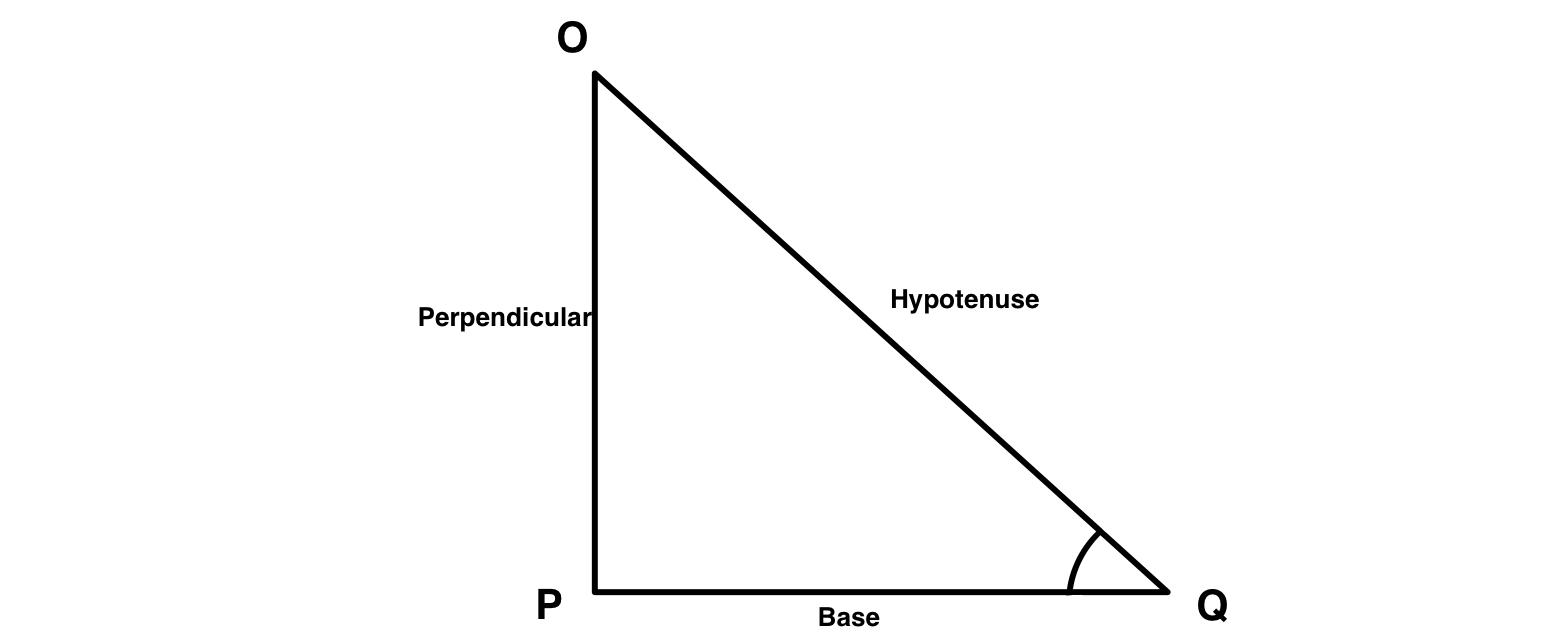
In
Answer
497.4k+ views
Hint: In this question it is given that

So to find the solution we need to know the Pythagorean theorem which states that for an right angle triangle the square of the hypotenuse is equal to the summation of the sqof base and perpendicular(height).
i.e,
Complete step-by-step answer:
Let us consider the length of PQ to be x cm.
Here it is given that OP = 7 cm and OQ - PQ =1
Therefore, OQ = 1+PQ = (1+x) cm.
Now by Pythagorean theorem we can write,
Now as we know that
So by using this identity
Therefore the equation (2) can be written as,
Therefore the length of the base PQ = 24 cm and the length of the hypotenuse OQ = 1+x = (1+24) cm = 25 cm.
Now we have to find the given trigonometric ratios,
As we know that
Therefore, from the diagram we can write,
Also we know that the trigonometric ratio
Therefore we get,
Note: To solve this type of question you need to know that In mathematics, the trigonometric functions (also called circular functions, angle functions or goniometric functions) are real functions which relate an angle of a right-angled triangle to ratios of two side lengths. The most widely used trigonometric functions are the sine, the cosine, and the tangent which can be written as

So to find the solution we need to know the Pythagorean theorem which states that for an right angle triangle the square of the hypotenuse is equal to the summation of the sqof base and perpendicular(height).
i.e,
Complete step-by-step answer:
Let us consider the length of PQ to be x cm.
Here it is given that OP = 7 cm and OQ - PQ =1
Therefore, OQ = 1+PQ = (1+x) cm.
Now by Pythagorean theorem we can write,
Now as we know that
So by using this identity
Therefore the equation (2) can be written as,
Therefore the length of the base PQ = 24 cm and the length of the hypotenuse OQ = 1+x = (1+24) cm = 25 cm.
Now we have to find the given trigonometric ratios,
As we know that
Therefore, from the diagram we can write,
Also we know that the trigonometric ratio
Therefore we get,
Note: To solve this type of question you need to know that In mathematics, the trigonometric functions (also called circular functions, angle functions or goniometric functions) are real functions which relate an angle of a right-angled triangle to ratios of two side lengths. The most widely used trigonometric functions are the sine, the cosine, and the tangent which can be written as
Recently Updated Pages
Master Class 11 Economics: Engaging Questions & Answers for Success

Master Class 11 Business Studies: Engaging Questions & Answers for Success

Master Class 11 Accountancy: Engaging Questions & Answers for Success

Master Class 11 English: Engaging Questions & Answers for Success

Master Class 11 Computer Science: Engaging Questions & Answers for Success

Master Class 11 Maths: Engaging Questions & Answers for Success

Trending doubts
State and prove Bernoullis theorem class 11 physics CBSE

1 ton equals to A 100 kg B 1000 kg C 10 kg D 10000 class 11 physics CBSE

State the laws of reflection of light

One Metric ton is equal to kg A 10000 B 1000 C 100 class 11 physics CBSE

Difference Between Prokaryotic Cells and Eukaryotic Cells

1 Quintal is equal to a 110 kg b 10 kg c 100kg d 1000 class 11 physics CBSE




